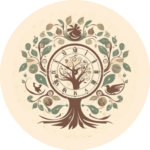When I was growing up, I was told to avoid cold showers if I was having my period. I was also not supposed to leave the house with my hair wet unless it was summer. When we travelled to the mountains, my maternal grandmother would ‘fill her lungs with forest air’. She claimed to feel instantly healthier.
We all heard similar things, but the origin of this advice is often unclear. Going beyond family anecdotes, there’s the vast world of complementary and alternative medicine (CAM), from which much of this knowledge derives. Born in no small measure from a deeply felt disappointment at orthodox medicine, this discussion is often framed as an opposition between traditional and empirical knowledge and a medicalised, intervention-based, hospital-centred model of care. So, alternative medicine often focuses on lifestyle: diet, exercise, sleep, and overall well-being are taken into consideration.
Paradoxically, this feels old and new at the same time. For instance, the adoption of a more plant-based diet can be seen as a trendy choice by some today, while for others it is linked to a long tradition of accumulation of knowledge, often by marginalised communities (think of Buddhist monks, for instance).
As always, I am struck by how studying the history of medicine can help us navigate the present. But this is a (very) big topic, and I want to concentrate on the idea of ‘non-naturals’ in the past. So, first things first. If we think of a 16th-century person interested in buying a book about domestic medicine at their local fair, they would usually be able to choose between two big groups: books with recipes for common ailments, and regimens for a healthy life. The first group was usually about treating a specific problem, while the latter was about preventing disease in the first place.

From Hippocrates in the 5th century BCE to the 18th century, the main framework through which Europeans understood medicine was the humoral theory. People had four humours (blood, phlegm, black bile, and yellow bile), and it was believed that their imbalance was responsible for illness. But humours were of course not the only factors in explaining health (or the lack thereof). If recipes were aimed at treating the sick body, regimens were guides to conserve health. Treatment and prevention were two sides of the same coin: medicine was not only a healing art but the art of preserving health.
So, how would a 16th-century person go about preventing illness? Besides keeping humours in balance (with bloodletting and similar methods), they needed to be mindful of the six ‘non-natural’ things which determined health: food/drink, exercise/rest, air, sleep, evacuation, and emotions. Described by Hippocrates and further developed by Galen in the second century CE, guidelines about the non-naturals abounded in medieval and early modern medical texts, especially regimens of health, authored by physicians. But what did they say? And how do they relate to my grandmother breathing in the pine-scented forest air?

1. Food and Drink
In the same way that people had individual constitutions, so did foods and beverages, which could be hot, cold, dry, or wet. These qualities should be taken into consideration when choosing and preparing foods and drinks. For instance, wine was believed to ‘heat’ the body, which is why it should be drunk in moderation, especially by those who had a choleric or sanguine temperament. Pregnant or nursing people should water their wine down to diminish its heat. It was believed that the stomach was responsible for concocting food before it would be distributed in the body by the blood. Because they influenced the digestive process, some foods such as raw vegetables were believed to prepare the stomach for a meal, while others would be more suited to ‘closing’ the stomach afterwards. (Have you ever wondered why the French finish a meal with cheese? That’s why.)

2. Exercise and Rest
Exercise improved bodily functions: for instance, it heated the body, promoting digestion. It opened the pores, allowing waste to leave the body through sweat. For Galen, exercise should be vigorous, accompanied by accelerated breathing. But later physicians cautioned people to be moderate and to adapt exercise to their individual needs. They could be active (such as walking) or passive (such as being transported in a carriage). Those who could not partake in strenuous activities could resort to baths or massages, which would attain similar health results. Sounds much nicer to me than jogging – and closer to a spa day!

3. Air
The air was a common cause of concern for 16th-century people. Was it cold or hot? Humid or dry? Depending on the person’s constitution, age, gender, and the season of the year, the air could have different effects. For Avicenna, the 11th-century Persian physician who so greatly influenced Western medicine, the air should be temperate: light, bright, moving gently, and smelling sweet. Corrupted air was deemed to cause plague, for instance. People were advised to purify the air with fire and scented herbs. Physicians often prescribed a change of location to their patients, in the hope that illness could be cured in a place where the air was different. The brain was thought to be particularly vulnerable to it – have you ever noticed when you visit a museum how people in the past always seem to be wearing headwear or hats in the paintings? Besides fashion, the concern with air directly influenced architecture. An ideal Italian villa in the Renaissance would have been high up to enjoy the breeze and the sun, but not too exposed to inclement winds. And don’t even think about building your dream house next to a sewer – but who would, if given the choice?
4. Sleep
Regimens of health directed people about how, for how long, and when one should sleep to maximise their health. The main concern was with digestion, as it was believed that sleep was caused by the vapours rising from the food in the stomach to the brain as it was digested. Daytime naps were not advised, as they wouldn’t be long enough for digestion to be complete. Plus, they could cause laziness. As wealthier parts of the population started to nap in the 17th century, it was thought that a wooden chair would be ideal: not too comfortable was the goal. Sleeping on your back was not advised, as these vapours could get blocked in the brain. Elevating your head and sleeping on one side would be better for digestion as well as protecting the brain. Ideally, you should switch sides every couple of hours… But I’m not sure how often people followed this advice after a rich mutton stew and wine!

5. Evacuation
Within the humoral understanding of the body, corrupt or excessive humours often needed to be purged, and impurities, expelled. The regular purging of the body was seen as essential to maintaining one’s health: bloodletting, inducing vomit, provoking sweat, as well as stimulating retained menstruation were all important parts of preventing illness – and not just treatments for it. Superfluous fluids might cause blockages if not removed from the body, and these ‘excrements’ went beyond urine and faeces. My grandmother (the paternal one this time) believed we should brush our hair vigorously, especially before bed. That would make sense to our hypothetical 16th-century person buying a book at the local fair. Combs were essential in removing the ‘excrements of the head’, and combing one’s hair was not just about vanity, but about preventing brain issues by making sure that what needed to be expelled from the body didn’t cause any obstructions. Think of barbers and their connection to medicine (especially barber surgeons). They took care of people’s hair, beards, nails, ears, teeth, and skin, mainly for hygienic purposes. They even had separate comb sets for beards and hair – you wouldn’t want any cross-contamination with your head’s excrements!
6. Emotions
The Greeks called them ‘passions’, the ‘accidents of the soul’. Today, we might talk of mental health instead. A person’s emotional life was thought to greatly affect their health. This was mainly because these fluctuations influenced the heart, responsible for heating the body through heat. Emotions would have a direct effect on the body’s temperature and, as we have seen, the balance between hot/cold and wet/dry was central in the humoral understanding of the body. So, physicians advised their patients to be careful with the passions most likely to disturb their humoral balance: someone of a choleric temperament should be careful with anger or hate, as they would make the body drier and hotter. The key was moderation, as a sudden emotional change could trigger disease or even death. Remember all the stories of people dying from a broken heart in literature? The non-naturals are behind that idea.

The non-naturals are a vast topic, in the same way that the humoral theory is. Understandings of both varied greatly across time and space, and this text can only hope to give the briefest introduction to this subject. Whole books can be (and have been) written about each of the non-naturals. I hope that the fun examples I chose helped to illustrate the logic behind this way of thinking about how what we would today call ‘lifestyle’ affects the body and health. My grandmothers might have been a bit off with their advice. But they were the heirs to a long tradition of trying to be as healthy as possible and to live a long life – and isn’t that what we all want?
References:
Avicenna, A Treatise on the Canon of Medicine of Avicenna (London: Luzat, 1930).
Castore Durante, Il Tesoro della Sanità (Venice: Andrea Muschio, 1586).
Rodrigo Fonseca, Del Conservare la Sanità (Florence: Semartelli, 1603).
Galen, De sanitate tuenda: A Translation of Galen’s Hygiene (Springfield: Thomas, 1951).
Hippocrates, Airs, Waters, Places (London: W. Heinemann, 1923).
Bartolomeo Paschetti, Del Conservar la Sanità (Genoa: Giuseppe Pavoni, 1602).
Further Reading:
Sandra Cavallo and Tessa Storey, Healthy Living in Late Renaissance Italy (Oxford: Oxford University Press, 2013).
David Gentilcore, Food and Health in Early Modern Europe: Diet, Medicine and Society (1450-1800) (London: Bloomsbury, 2016).
Sasha Handley, Sleep in Early Modern England (New Haven, CT: Yale University Press, 2016).




